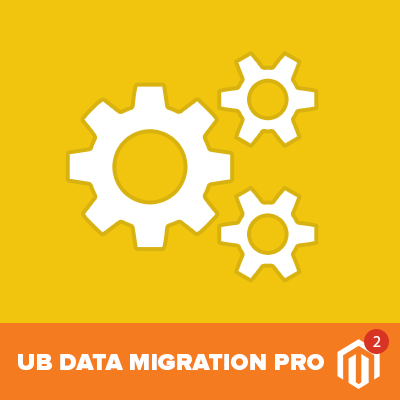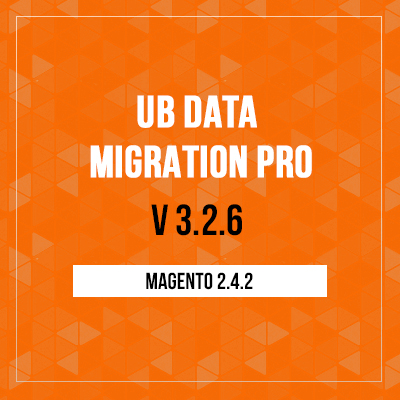The latest version of Magento 2, Magento 2.2 has been released in Sept that brings significant new functionality to the market. It’s not a surprise that B2B segment of ecommerce is a huge focus in Magento 2.2, and this focus on B2B features makes sense when you consider the rapid growth of the B2B market, which should generate $6,7 trillion across the global by 2020, as reported in a research by Frost & Sullivan.
For now Magento 2 is in the phase of active improvement. In this context the most important question is how to migrate from Magento 1 and the latest Magento 2.2.
This blog will serve as a quick guide for those who need to know about what’s new in Magento 2.2 and all changes that will affect your Magento data migration projects.
Magento 2.2 New Features
On June 20th, 2017, Magento organized an interesting webinar for developers that offered a sneak peak into some of the key improvements and new features in Magento 2.2, including a full suite of native B2B features, performance and deployment enhancements, advanced reporting etc. In case you missed, it’s worth checking the webinar recording here.
Below is a quick summary of what’s new in Magento 2.2 version.
Magento 2.2 EE Features:
- New B2B feature set;
- Enhanced Reporting;
- Better Fraud Protection (Signifyd fraud protection is now integrated with Magento);
- Improved Security
- Enhanced Developer Experience;
- Mass Upgraded Technology Stack (Now supports PHP7.1, along with Redis 3.2, MySQL 5.7, Varnish 5)
- New Deployment Process (Pipeline)
- Better Performance: Improved Indexing, Cart, and Cache operations.
Magento 2.2 CE Features:
- Improved Security
- Enhanced Developer Experience;
- Mass Upgraded Technology Stack (with similar technology stack for Magento 2.2 EE. Please note Magento’s dropped support for PHP 5.6 and Varnish 3)
- New Deployment Process (Pipeline)
- Better Performance: Improved Indexing, Cart, and Cache operations (Customers can browse and shop on a storefront while indexers are running).
Beside the new features that improve upon Magento’s Business-to-Business (B2B) functionality, there are also lots of bug fixes in Magento 2.2. You can find more information about the list of improvements and bug fixes in the release notes: Magento 2.2 Enterprise Edition and Magento 2.2 Community Edition.
Changes in Magento 2.2 that affect your data migration projects
To help you prepare for smooth and trouble-free Magento 2.2 CE data migration, our team had examined the changes between Magento 2.2 CE vs. Magento 2.1.9 CE side by side and already updated our migration tool (version 3.1.1) accordingly.
Below we’re sharing our findings about all important changes in Magento 2.2 CE that might affect your data migration projects.
#1: Table: store_group
New in Magento 2.2:
- ‘code’ varchar(32) DEFAULT NULL COMMENT ‘Store group unique code’
- UNIQUE KEY ‘STORE_GROUP_CODE’ (‘code’)
(Click to view full size graphic)

#2: Table: catalog_product_bundle_option_value
New in Magento 2.2:
- ‘parent_product_id’ int(10) unsigned NOT NULL COMMENT ‘Parent Product Id’
Changes in Magento 2.2:
- UNIQUE KEY `CAT_PRD_BNDL_OPT_VAL_OPT_ID_PARENT_PRD_ID_STORE_ID` (`option_id`,`parent_product_id`,`store_id`)
(Click to view full size graphic)

#3: Table: catalog_product_bundle_selection_price
New in Magento 2.2:
- ‘parent_product_id’ int(10) unsigned NOT NULL COMMENT ‘Parent Product Id’
Changes in Magento 2.2:
- PRIMARY KEY (‘selection_id’, ‘parent_product_id’, ‘website_id’)
(Click to view full size graphic)

#4: Table: catalog_product_entity_tier_price
New in Magento 2.2:
- ‘percentage_value’ decimal(5,2) DEFAULT NULL COMMENT ‘Percentage value’
Changes in Magento 2.2:
- ‘customer_group_id’ int(10) unsigned NOT NULL DEFAULT ‘0’ COMMENT ‘Customer Group ID’
(Click to view full size graphic)

#5: Table: quote_address
Changes in Magento 2.2:
- ‘firstname’ varchar(255) DEFAULT NULL,
- ‘middlename’ varchar(40) DEFAULT NULL,
- ‘lastname’ varchar(255) DEFAULT NULL,
- ‘shipping_method’ varchar(120) DEFAULT NULL,
(Click to view full size graphic)
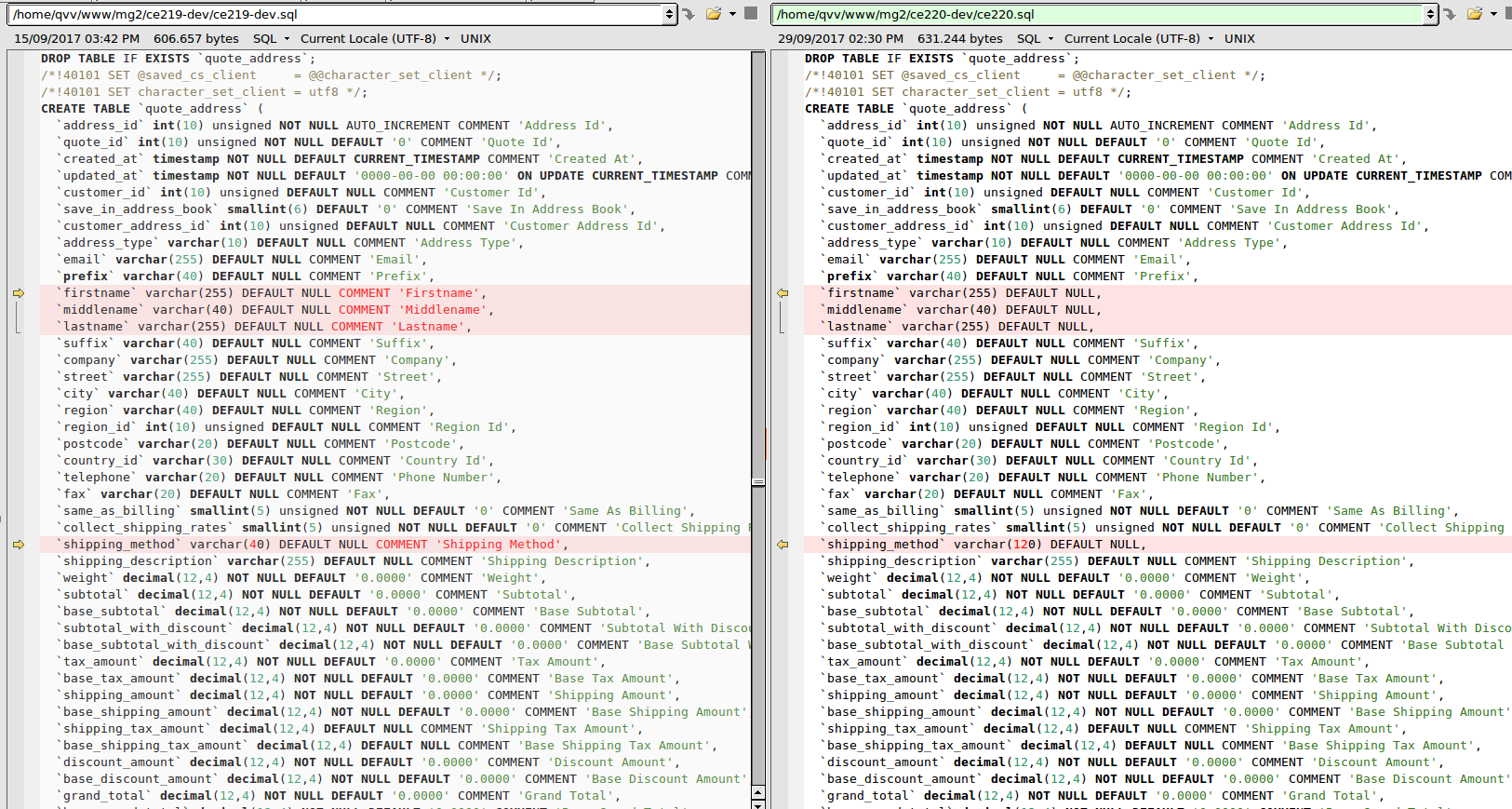
#6: Table: quote_address_item
Changes in Magento 2.2:
- ‘free_shipping’ int(10) unsigned DEFAULT NULL COMMENT ‘Free Shipping’
(Click to view full size graphic)

#7: Table: quote_item
Changes in Magento 2.2:
- ‘free_shipping’ smallint(5) unsigned DEFAULT NULL DEFAULT ‘0’ COMMENT ‘Free Shipping’
(Click to view full size graphic)

#8: Table: sales_order
Changes in Magento 2.2:
- ‘shipping_method’ varchar(120) DEFAULT NULL,
(Click to view full size graphic)
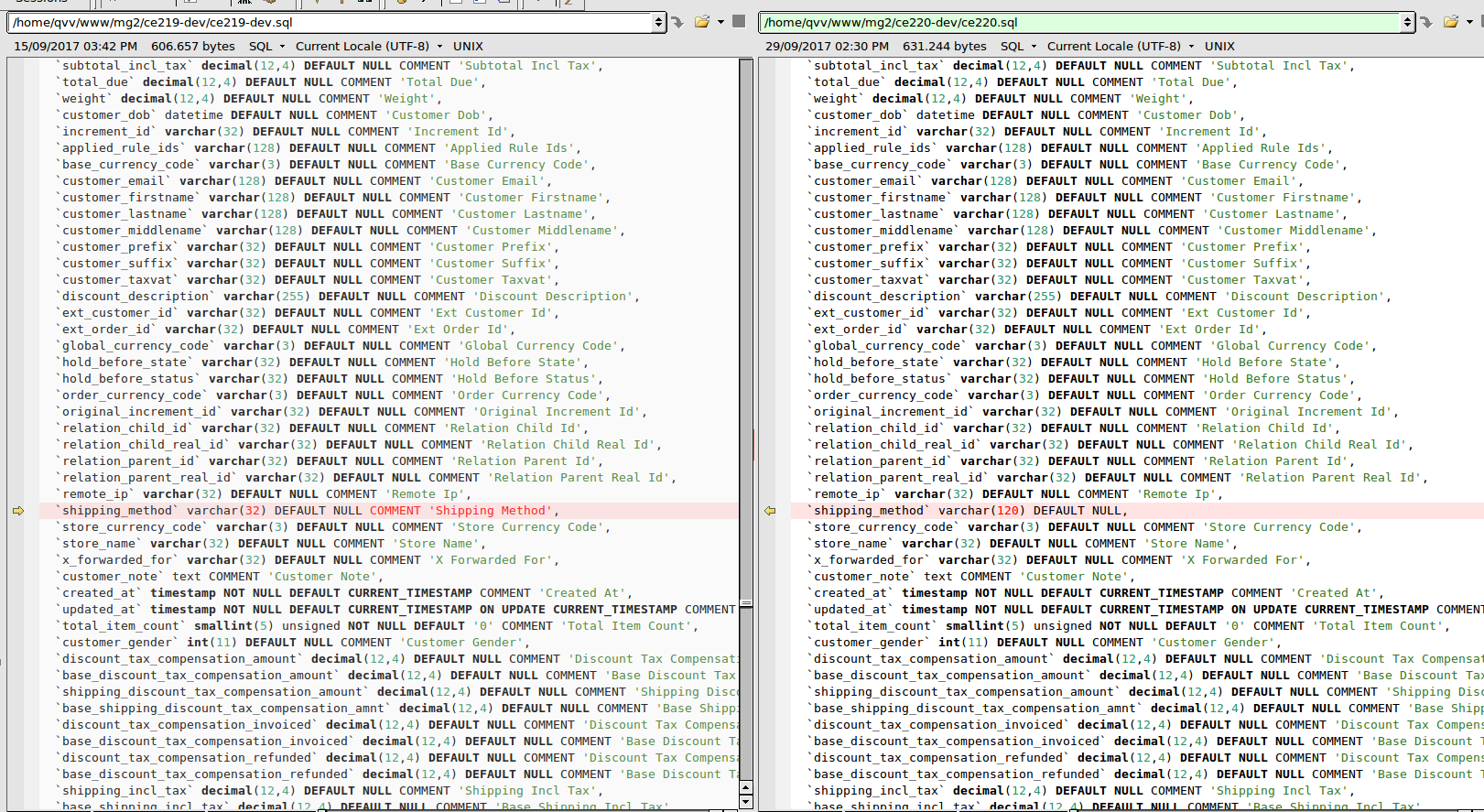
#9: Table: Sales_order_item
Changes in Magento 2.2:
- ‘free_shipping’ smallint(5) unsigned NOT NULL DEFAULT ‘0’ COMMENT ‘Free Shipping’
(Click to view full size graphic)
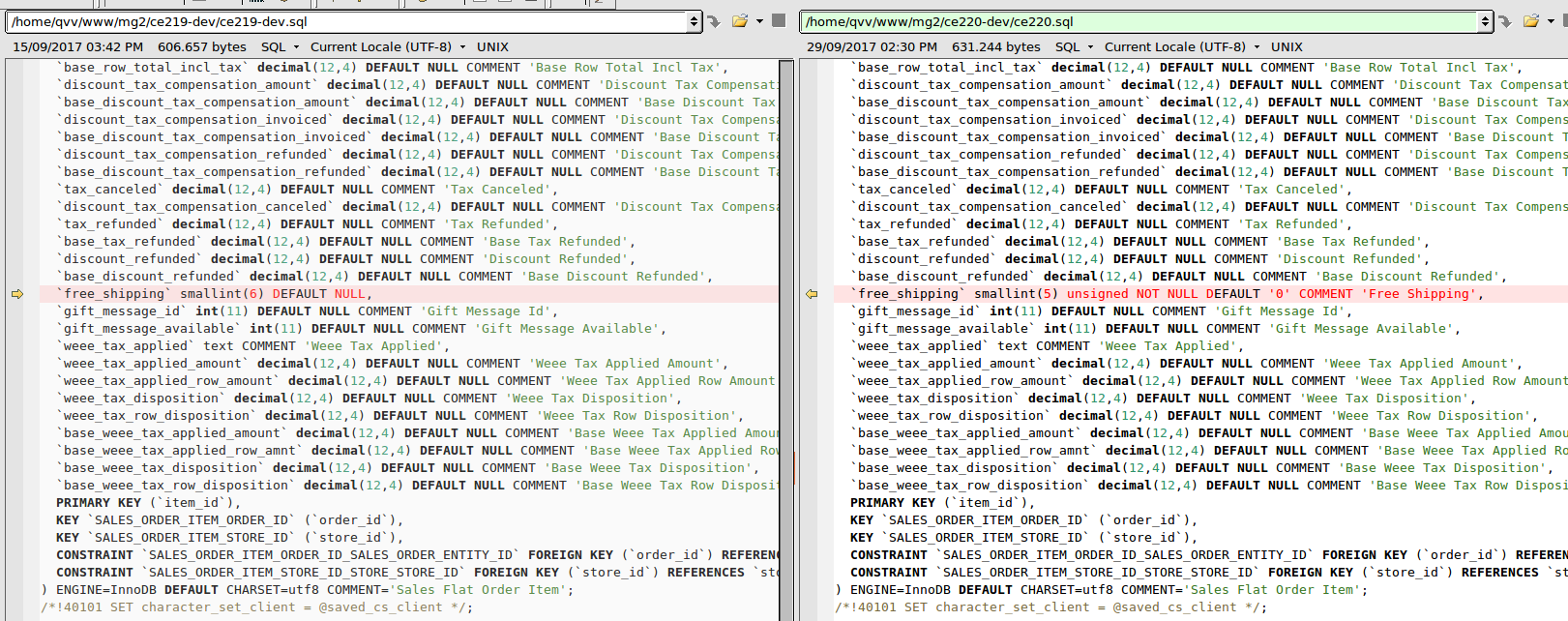
#10: Table: sales_order_payment
Changes in Magento 2.2:
- ‘cc_number_enc’ varchar(128) DEFAULT NULL,
(Click to view full size graphic)

#11: Table: salesrule
Changes in Magento 2.2:
- ‘simple_free_shipping’ smallint(5) unsigned NOT NULL DEFAULT ‘0’ COMMENT ‘Simple Free Shipping’

#12: Data serialization -- Moving from PHP serialization to JSON encoding
There’s an important change in storing data in the Catalogrules and salesrule tables in Magento 2.2, compared to the old versions.
Magento 2.2.0 changed from the method serialize() to json_encode() to store value in the fields of both catalogrule and salesrule tables. DB storage size is always crucial for any ecommerce database, so JSON encoding appears to be better for you than PHP serialization. This means our migration tool needs to convert the old data into JSON format using the json_encode() function.

Convert metadata from serialized to JSON format in Magento 2.2

Convert metadata from serialized to JSON format in Magento 2.2
Final thoughts
We hope you’ve enjoyed this quick tour of some of the features the Magento 2.2 offers to developers and merchants, especially for those who seek for an in-depth look at Magento 2.2’s changes that affect the data migration.
As with most things, the success of a Magento data migration project is going to come down to detailed preparation. By taking the time to fully understand the new changes in Magento 2.2, the move to Magento 2 is made easier.
The level of effort to migrate from Magento 1 to Magento 2 depends upon your specific database. However, we are constantly improving the Data Migration tool; so the migration efforts are continuously decreasing. If you want to make a test migration project to get a feel for how our Migration tool (free version) works, download here.
Do you have any questions left? Feel free to get in touch.
